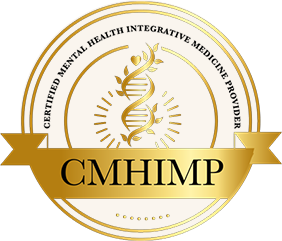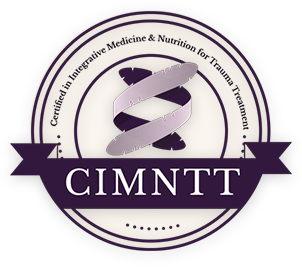Certificación
Diaphragmatic Breathing for GERD: A Non-Pharmacological Approach to Strengthen the Antireflux Barrier
A growing body of randomized trials and mechanistic studies indicates that diaphragmatic breathing (DB) is a practical, low‑risk adjunct for gastroesophageal reflux disease (GERD). Patients practicing DB reported greater improvements in GERD-specific quality-of-life scores, sleep quality, anxiety, and resolution of chronic cough compared to controls.

Breath is life itself. When we bring awareness to our breathing—through specific exercises designed to meet our needs—we unlock a gentle yet powerful tool to support mental and physical health. Among these practices, diaphragmatic breathing stands out as ancient, evidence-based medicine.. Long used in mind-body traditions, it’s now gaining clinical recognition as a non-pharmacological approach to treating gastroesophageal reflux disease (GERD).
GERD is one of the most common digestive disorders today, particularly among individuals experiencing chronic stress, PTSD, or anxiety. Dietary factors—such as regular consumption of coffee, alcohol, sugar, and refined flour—also contribute to the problem. While proton pump inhibitors (PPIs) are widely prescribed, long-term use has been associated with potential side effects, including increased risk for cognitive decline. Fortunately, there are holistic alternatives that support both digestive and nervous system health.
Diaphragmatic breathing (DB), also known as abdominal or belly breathing, is a simple, non-invasive technique that strengthens the crural diaphragm—a key component of the lower esophageal sphincter (LES), which helps prevent acid reflux and reduces symptoms such as chronic cough, post-meal discomfort, or disrupted sleep.
Let’s take a closer look at five recent studies exploring how diaphragmatic breathing may support GERD symptoms and improve quality of life.
The first study is a systematic review of current evidence supporting the use of physiotherapeutic practices in treating GERD. It highlights how crural diaphragm dysfunction contributes to reflux and proposes high-resolution manometry (HRM) as a valuable tool for identifying patients most likely to benefit from DBT and for monitoring treatment progress.
The second study uses a randomized controlled trial to measure the effects of DB on upright GERD. Patients who practiced diaphragmatic breathing showed a significant increase in LES pressure and a marked reduction in postprandial reflux events. Acid exposure also dropped notably within two hours after meals, pointing to a potential mechanism for DB’s therapeutic effect—namely, by increasing the pressure gradient between the stomach and esophagus.
The third study focuses on quality of life and medication usage. Participants practiced abdominal breathing for four weeks and reported improved GERD-specific quality-of-life scores along with reduced on-demand PPI use. While the sample size was small, the improvements were statistically significant within the intervention group, suggesting DB may be an effective adjunct or alternative to pharmacological management.
The fourth study investigates deep diaphragmatic breathing in patients with GERD-related chronic cough. Over eight weeks, patients practicing DB alongside standard care experienced greater symptom relief, better sleep, reduced anxiety, and improved scores on cough-related questionnaires. Electromyography data confirmed stronger diaphragmatic muscle activation, linking symptom improvement to physiological change.
The fifth study looked at how diaphragmatic breathing compares to aerobic exercise and standard care in people with moderate to severe GERD. Both exercise approaches helped improve quality of life; however, only the diaphragmatic breathing group showed a statistically significant increase in lower esophageal sphincter (LES) pressure. This implies that breathing techniques might provide a more focused benefit for reflux, especially for people who are unable to engage in aerobic exercises because of an illness, injury, or other physical restrictions.
Tags: diaphragmatic breathing, GERD, lower esophageal sphincter, abdominal breathing, reflux symptoms, non-pharmacological therapy, manometry, mind-body interventions, gastroesophageal reflux-induced chronic cough (GERC)
Interested in Learning More?
- Course(s): Plant Medicine & Nutrition for Wellness During Life’s Transitions
- Course(s): PTSD, Complex Trauma, and Traumatic Brain Injury
- Book(s): Nutrition Essentials For Mental Health
- Book(s): The Brainbow Blueprint: A Clinical Guide to Integrative Medicine and Nutrition for Mental Well-Being
Research Glossary
Research has its own vocabulary. To help you decipher research, I created a Glossary to ease the way. You may access it here: Research Glossary
Referenced Research Publications
Dysphagia
2023 Apr
DOI: 10.1007/s00455-022-10494-6
Breathing Exercises in Gastroesophageal Reflux Disease: A Systematic Review
Abstract
The pathogenesis of gastroesophageal reflux disease (GERD) is multifactorial. The severity of abnormal reflux burden corresponds to the dysfunction of the antireflux barrier and inability to clear refluxate. The crural diaphragm is one of the main components of the esophagogastric junction and plays an important role in preventing gastroesophageal reflux. The diaphragm, as a skeletal muscle, is partially under voluntary control and its dysfunction can be improved via breathing exercises. Thus, diaphragmatic breathing training (DBT) has the potential to alleviate symptoms in selected patients with GERD. High-resolution esophageal manometry (HRM) is a useful method for the assessment of antireflux barrier function and can therefore elucidate the mechanisms responsible for gastroesophageal reflux. We hypothesize that HRM can help define patient phenotypes that may benefit most from DBT, and that HRM can even help in the management of respiratory physiotherapy in patients with GERD. This systematic review aimed to evaluate the current data supporting physiotherapeutic practices in the treatment of GERD and to illustrate how HRM may guide treatment strategies focused on respiratory physiotherapy.
Keywords: Diaphragmatic breathing training; Gastroesophageal reflux disease; High-resolution manometry.
© 2022. The Author(s), under exclusive licence to Springer Science+Business Media, LLC, part of Springer Nature.
Reference
Zdrhova, L., Bitnar, P., Balihar, K., Kolar, P., Madle, K., Martinek, M., Pandolfino, J. E., & Martinek, J. (2023). Breathing Exercises in Gastroesophageal Reflux Disease: A Systematic Review. Dysphagia, 38(2), 609–621. https://doi.org/10.1007/s00455-022-10494-6
The American journal of gastroenterology
2021, enero 01
DOI: 10.14309/ajg.0000000000000913
Effects of Diaphragmatic Breathing on the Pathophysiology and Treatment of Upright Gastroesophageal Reflux: A Randomized Controlled Trial
Abstract
Introduction: Uncontrolled results suggest that diaphragmatic breathing (DB) is effective in gastroesophageal reflux disease (GERD) but the mechanism of action and rigor of proof is lacking. This study aimed to determine the effects of DB on reflux, lower esophageal sphincter (LES), and gastric pressures in patients with upright GERD and controls.
Methods: Adult patients with pH proven upright GERD were studied. During a high-resolution impedance manometry, study patients received a standardized pH neutral refluxogenic meal followed by LES challenge maneuvers (Valsalva and abdominal hollowing) while randomized to DB or sham. After that, patients underwent 48 hours of pH-impedance monitoring, with 50% randomization to postprandial DB during the second day.
Results: On examining 23 patients and 10 controls, postprandial gastric pressure was found to be significantly higher in patients compared with that in controls (12 vs 7 mm Hg, P = 0.018). Valsalva maneuver produced reflux in 65.2% of patients compared with 44.4% of controls (P = 0.035). LES increased during the inspiratory portion of DB (42.2 vs 23.1 mm Hg, P < 0.001) in patients and healthy persons. Postprandial DB reduced the number of postprandial reflux events in patients (0.36 vs 2.60, P < 0.001) and healthy subjects (0.00 vs 1.75, P < 0.001) compared with observation. During 48-hour ambulatory study, DB reduced the reflux episodes on day 2 compared with observation on day 1 in both the patient and control groups (P = 0.049). In patients, comparing DB with sham, total acid exposure on day 2 was not different (10.2 ± 7.9 vs 9.4 ± 6.2, P = 0.804). In patients randomized to DB, esophageal acid exposure in a 2-hour window after the standardized meal on day 1 vs day 2 reduced from 11.8% ±6.4 to 5.2% ± 5.1, P = 0.015.
Discussion: In patients with upright GERD, DB reduces the number of postprandial reflux events pressure by increasing the difference between LES and gastric pressure. These data further encourage studying DB as therapy for GERD.
Copyright © 2020 by The American College of Gastroenterology.
Reference
Halland, M., Bharucha, A. E., Crowell, M. D., Ravi, K., & Katzka, D. A. (2021). Effects of Diaphragmatic Breathing on the Pathophysiology and Treatment of Upright Gastroesophageal Reflux: A Randomized Controlled Trial. The American journal of gastroenterology, 116(1), 86–94. https://doi.org/10.14309/ajg.0000000000000913
Journal of community hospital internal medicine perspectives
2025, enero 06
DOI: 10.55729/2000-9666.1438
Effectiveness of Abdominal Breathing Exercise to Control Gastroesophageal Reflux Disease, a Randomized Controlled Trial
Abstract
Objectives: To determine the effect of actively training the crura of diaphragm which is a part of lower esophageal sphincter using abdominal breathing exercises to treat gastroesophageal reflux disease.
Methodology: With a randomized controlled study design, a total of 22 (11 in each group) clinically diagnosed patients of GERD presenting to the gastroenterology outpatient department at Holy Family Hospital in Pakistan were assessed using GERD related "quality of life index (QoLI)" questionnaire and their on-demand proton pump inhibitors (PPI) usage. Single blinding technique will be used. Patients ages 18-60 years with GERD were included. However, those with hiatal hernia > 2 cm, previous surgeries on LES and those with who could not undergo the breathing exercise training were excluded. The data was collected via interviews. The intervention group was trained to do a 5-min breathing exercise and advised to perform it 5 times a day for 4 continuous weeks. On demand PPI usage was self-recorded. The control group was also trained to perform a breathing exercise that had no effect on LES and was asked to self-record on demand PPI usage. After 4 weeks the data was collected from both groups and compared quality-of-life index and PPI usage. Data was retrieved and analyzed using SPSS version 22. Descriptive analysis was used for describing the study variables. Paired t-test was used for in group comparison before and after intervention and independent t test was used for between group comparison, p value of <0.05 was taken as significant. Mean PPI usage of the two groups was also compared.
Results: An improved QoLI and reduced PPI usage was seen in the intervention group as compared to control group. Paired t test confirmed a statistically significant difference, but the independent t test did not. Linear regression test showed that F (1,20) = 32.822, p = 0.000. Adjusted R value is 0.603. y = 13.182x +2.812. The beta value is 0.789 and p value is 0.000.
Conclusion: The study concludes that abdominal breathing exercises can improve the GERD symptoms as assessed by QoLI score and on demand PPI usage. It advocates for an alternative treatment option for GERD patients that is more efficacious as compared to no breathing exercises and has less potential side effect as compared to continuous PPI use, enabling us to lead our way towards revolution in medicine providing more effective and less invasive treatment options to facilitate our patients.
Keywords: Abdominal breathing exercises; GERD; GERD related quality of life index.
© 2025 Greater Baltimore Medical Center.
Reference
Sadiq, M., Raza, M. S., Sadiq, N., Sadiq, A., Zafar, M., Zaidi, S. M. B., & Ambreen, S. (2025). Effectiveness of Abdominal Breathing Exercise to Control Gastroesophageal Reflux Disease, a Randomized Controlled Trial. Journal of community hospital internal medicine perspectives, 15(1), 30–35. https://doi.org/10.55729/2000-9666.1438
Respiratory research
2024, abril 18
DOI: 10.1186/s12931-024-02783-5
Positive effect of deep diaphragmatic breathing training on gastroesophageal reflux-induced chronic cough: a clinical randomized controlled study
Abstract
Background and objective: To explore the efficacy of deep diaphragmatic breathing training (DEP) in patients with gastroesophageal reflux-induced chronic cough (GERC).
Methods: A randomized controlled study was conducted involving 60 GERC patients who were divided into the intervention group and the control group (each with 30 patients). Both groups received routine medication treatment for GERC, while the intervention group received DEP training additionally. Both groups were evaluated by cough symptom scores, Hull airway reflux questionnaire (HARQ), gastroesophageal reflux diagnostic questionnaire (GerdQ), generalized anxiety disorder scale-7 (GAD-7), patient health questionnaire-9 (PHQ-9), Pittsburgh sleep quality index (PSQI), the Leicester cough questionnaire (LCQ), as well as capsaicin cough sensitivity testing, B-ultrasound and surface electromyography (sEMG) of the diaphragmatic muscles before and after treatment. The cough resolution rate and changes of the above indictors was compared between the two groups after eight weeks of treatment.
Results: After eight weeks of treatment, cough symptoms improved in both groups, but the cough resolution rate in the intervention group of 94% was significantly higher than that in the control group of 77% (χ2 = 6.402, P = 0.041). The intervention group showed significant improvements to the control group in GerdQ (6.13(0.35) VS 6.57(0.77)), GAD-7 (0(0;1) VS 1(0;3)), PSQI (2(1;3) VS 4(3;6)), LCQ (17.19(1.56) VS 15.88(1.92)) and PHQ-9 (0(0;0) VS 0(0;3)) after treatment. Compared to control group, sEMG activity of the diaphragmatic muscle was significantly increased in the intervention group after treatment, measured during DEP (79.00(2.49) VS 74.65 (1.93)) and quiet breathing (72.73 (1.96) VS 67.15 (2.48)).
Conclusion: DEP training can improve cough symptoms as an adjunctive treatment in GERC patients.
Trial registration: The protocol was registered in February 2, 2022 via the Chinese Clinical Trials Register ( http://www.chictr.org.cn/ ) [ChiCTR2200056246].
Keywords: Chronic cough; Deep diaphragmatic breathing training; Diaphragm; Gastroesophageal reflux; Non-pharmacological treatment.
© 2024. The Author(s).
Reference
Niu, S., Zhang, T., Li, W., Wen, S., Dong, L., Wang, S., Shi, W., Shi, C., Shen, Y., Huang, Q., Tan, Y., Xu, X., & Yu, L. (2024). Positive effect of deep diaphragmatic breathing training on gastroesophageal reflux-induced chronic cough: a clinical randomized controlled study. Respiratory research, 25(1), 169. https://doi.org/10.1186/s12931-024-02783-5
Middle East journal of digestive diseases
2021 Jan
DOI: 10.34172/mejdd.2021.205
Different Effects of Aerobic Exercise and Diaphragmatic Breathing on Lower Esophageal Sphincter Pressure and Quality of Life in Patients with Reflux: A Comparative Study
Abstract
Background: Gastroesophageal reflux disease (GERD) is a worldwide disorder with an increasing prevalence. The quality of life (QOL) of the patients may be influenced by reflux disease. Diaphragmatic breathing (DB), as well as aerobic exercise (AE), may improve the symptoms of reflux disease, although it remains a controversial issue. The aim of this study was to compare the effects of AE and DB on QOL and lower esophageal sphincter (LES) pressure of patients with moderate to severe reflux.
Methods: This was a case-control study that was conducted for 8 weeks among patients with moderate to severe GERD. The block randomization method was designed to randomize patients into three groups (AE, DB, and control) to achieve equal sample sizes. The control group received omeprazole 20 mg once daily. The other groups, in addition to omeprazole, received AE and DB. QOL and LES pressure were measured before and after the study by Questionary and Manometry method, respectively.
Results: 75 patients were enrolled in this study. Positive effects of DB on LES pressure was approved (p = 0.001). DB had significantly more effects on QOL than aerobic exercise (p = 0.003). AE can significantly improve QOL in patients (p = 0.02) but no significant change in LES pressure (p = 0.38). There was no change in the control group for both variables.
Conclusion: AE had no effects on LES pressure but can improve QOL of the patients. DB had more effects on QOL than AE, so injured or disable patients with reflux who cannot do AE, can benefit from DB to improve their reflux symptoms.
Keywords: Aerobic exercise; Diaphragmatic breathing; LES; Manometry; Quality of life; Reflux.
© 2021 The Author(s).
Reference
Ahmadi, M., Amiri, M., Rezaeian, T., Abdollahi, I., Rezadoost, A. M., Sohrabi, M., & Bakhshi, E. (2021). Different Effects of Aerobic Exercise and Diaphragmatic Breathing on Lower Esophageal Sphincter Pressure and Quality of Life in Patients with Reflux: A Comparative Study. Middle East journal of digestive diseases, 13(1), 61–66. https://doi.org/10.34172/mejdd.2021.205
















